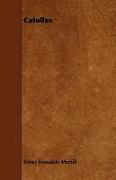Catullus
BücherAngebote / Angebote:
CHAPTER I. ANONO the various orders of mammalia, from which man has reclaimed and domesticated certain species-species, the possession of which, in a state of subjectiol and dependence, contribute essentially to his welfare-that of the Buminantia, or ruminating animals, affords him the greatest number and those not of the lowest importance. To this order belong the camel, the llama and its allies, the different species of the ox, the sheep, and the goat. Since the remotest periods of history, the ox and the sheep have been regarded in the light of pioperty nor is their intrinsic value less appreciated after a lapse of ages. Who does not know how intimately the wellbeing of a, nation is connected with its agrarian produce, whether animal or vegetable and how closeiy the interests of commerce and of agriculture are inter-blended together It has been said by some one, that he who makes two stalks of corn gram where only one grew before, is a benefactor of his country and by a parity of reasoning, he who improves the breeds of domestic cattle, feeds two on the land which before only supported one and he who devises superior modes of management with regemd to the extension of their utility, also serves the interests of the community. On topics like these, however, we need not insist let us at once to our subject. The Ox, then, is one among the ruminating order of quadrupeds. All the animals of this order have certain characteristics in common, which distinctly mark the differences between them and the animals of all other orders. They have cloven hoofs and they are destitute of incisors, or cutting teeth, in the upper jaw. With regard to the hoof we may observe that, as in the horse, the terminal bone of the toe is incased with horn but the horse has only a single series of phaIangd bones, the ruminants two and hence the expression-cloven. But besides these there me, in some groups, as the deer, an extralateral toe on each side, consisting of three minute phalangal bones, supported by a small stylet. As in the horse, the canon-bone is single, but generally shows, more or less, by a longitudinal furrow, that in an early stage it consisted of two portions, first coalescing, and at length becoming ossified into one. With respect to the teeth, though there are no incisors in the upper jaw, the gum is hardened, forming a fibrous and elastic pad, fitted to sustain the pressure of the lower incisors, eight in number, the position of which is rather oblique than vertical. The molars are six in number on each side, above and below. Of these the first three are preceded by milk, or deciduous teeth the three posterior are originally permanent. Their surface is marked by two pairs of crescentic ridges. h the lower jaw, their crescents have the convexity outwards in the upper jaw, the reverse. These crescents, as they wear down by use, show a centre of bone surrounded by a coat of enamel. In general, there are no canine teeth these exist, however, in the upper jaw of the camel, the llama, the male of the musk-deer, and obevrotains, and the male of many true deer. The act of rumination, or chewing the cud, supposes a peculiarly complicated structure of the stomach, to be more fully explained hereafter.....
Folgt in ca. 15 Arbeitstagen
